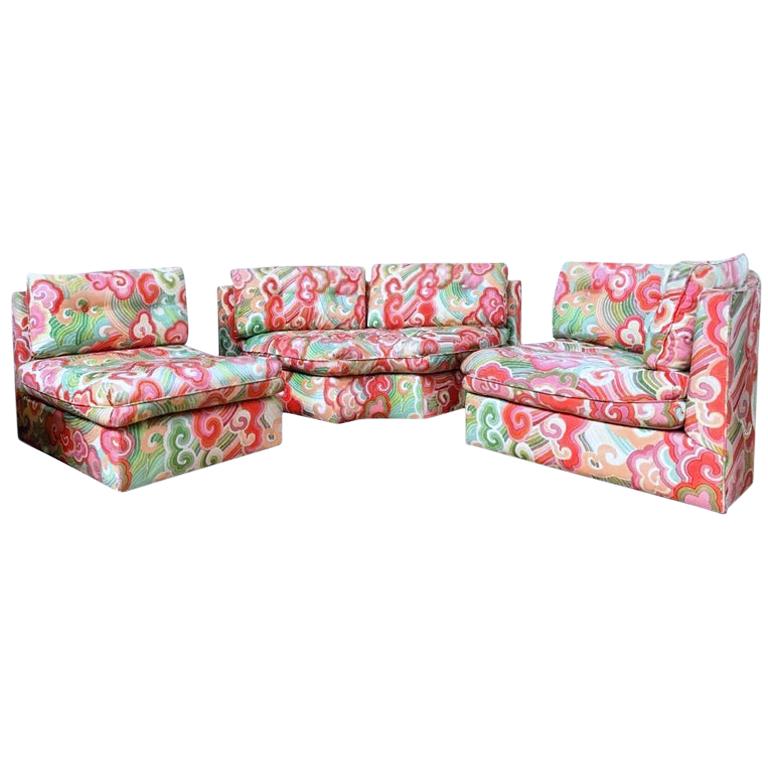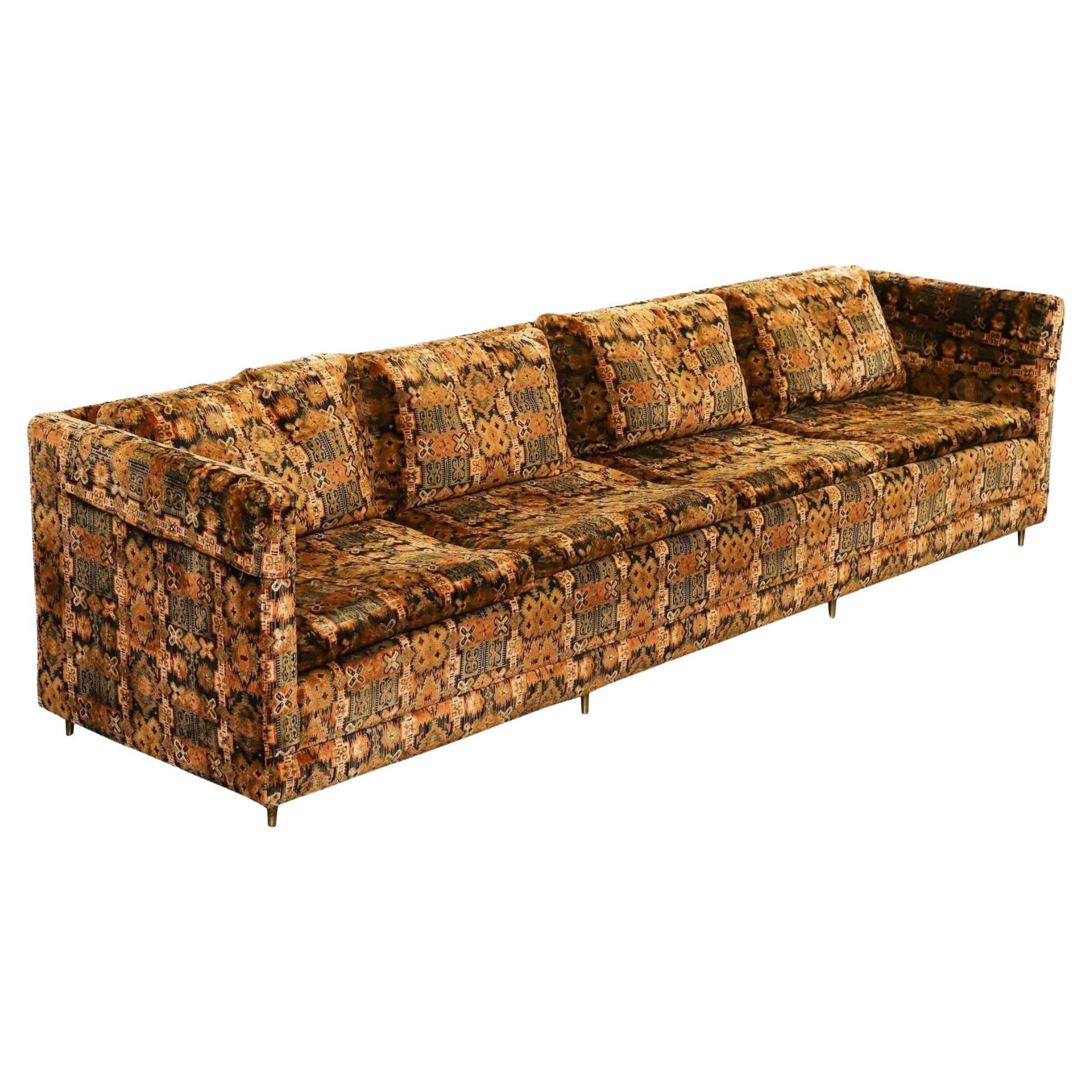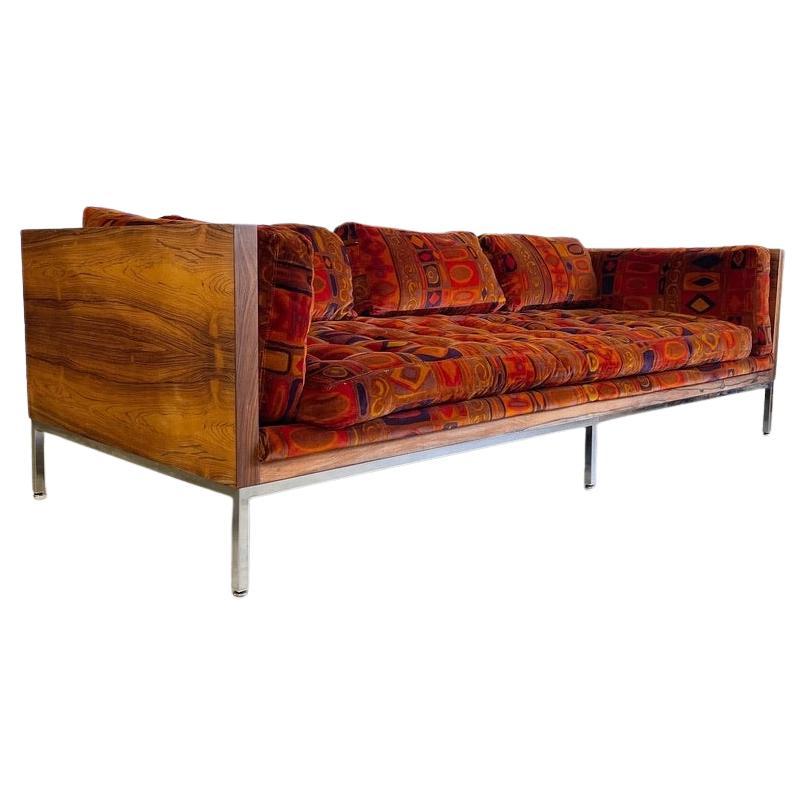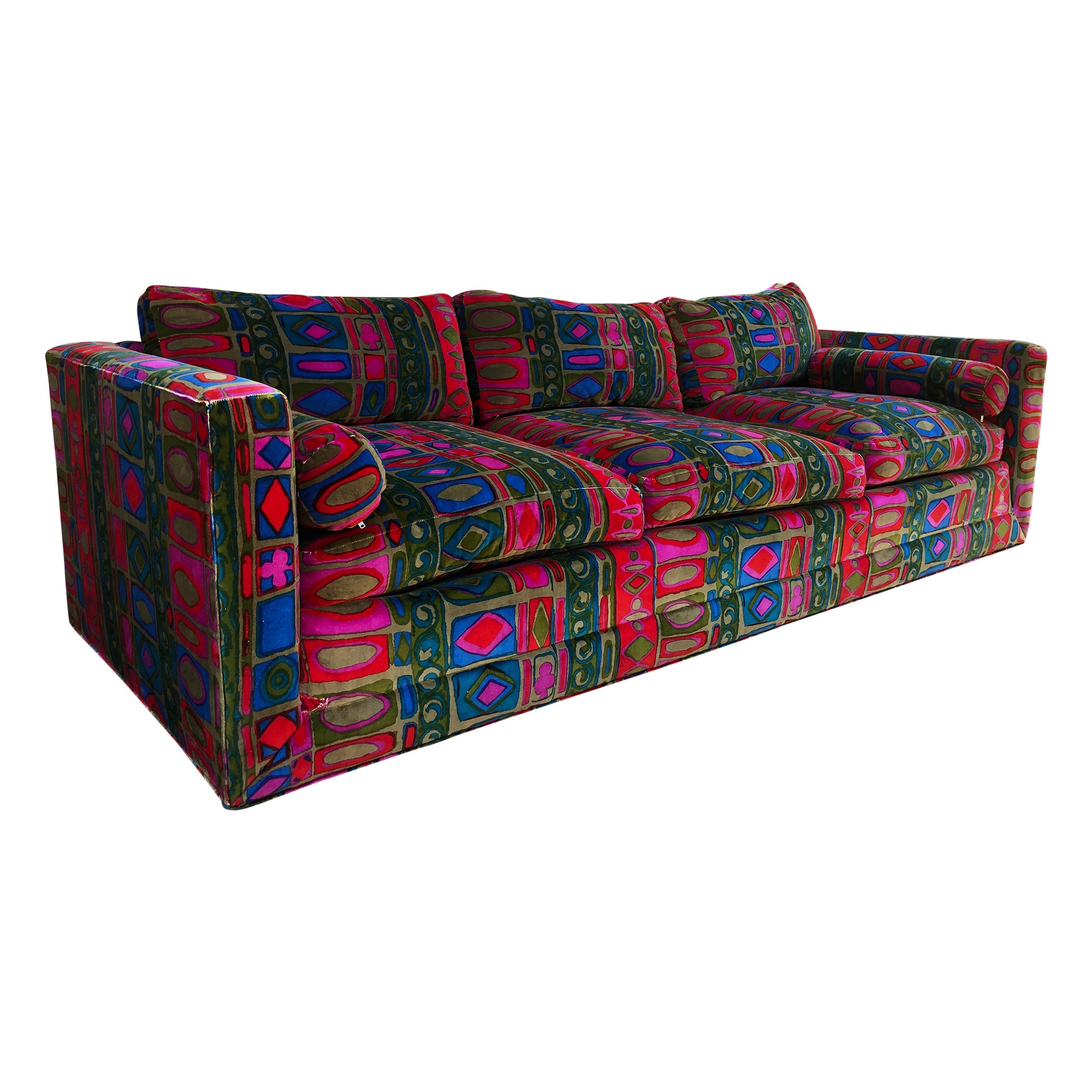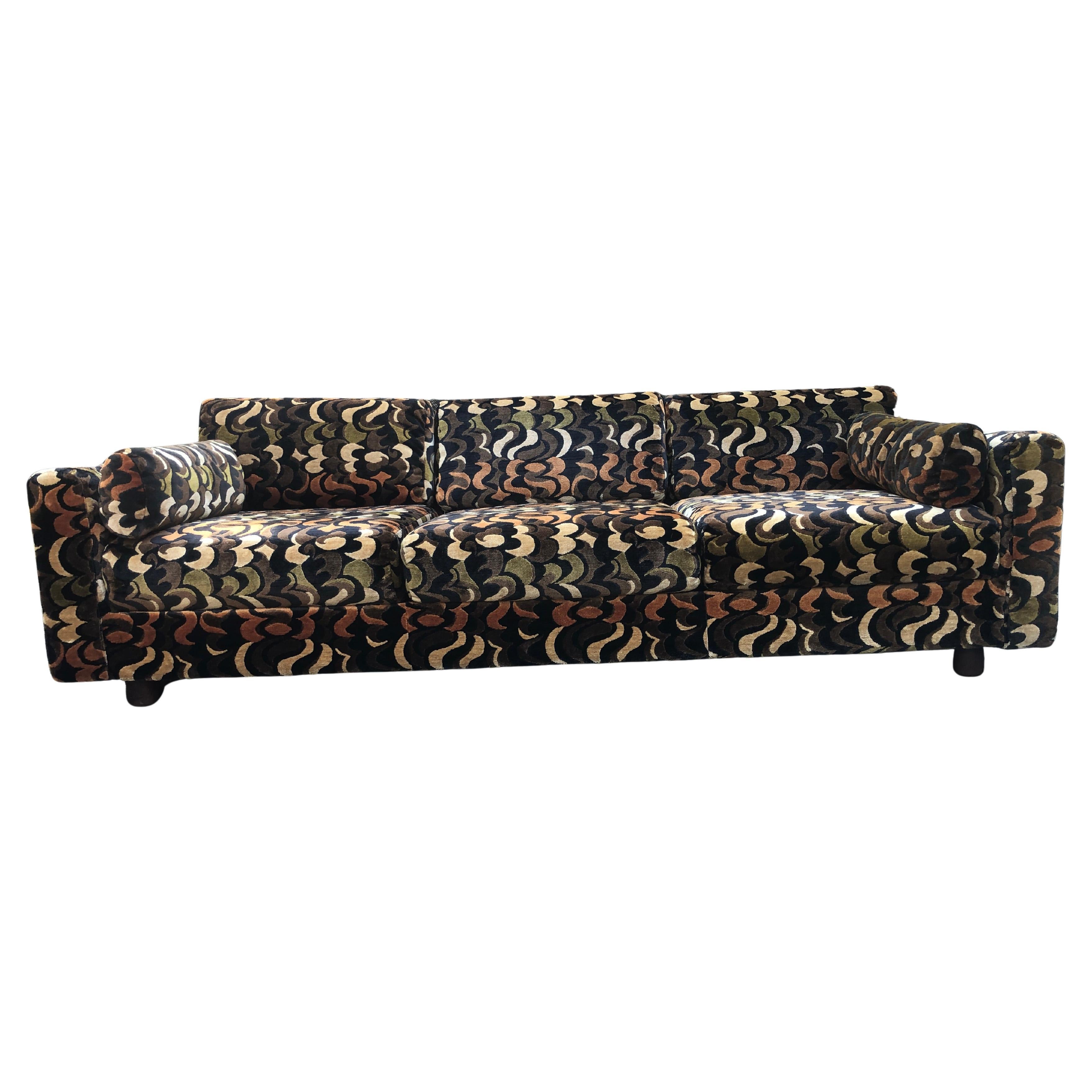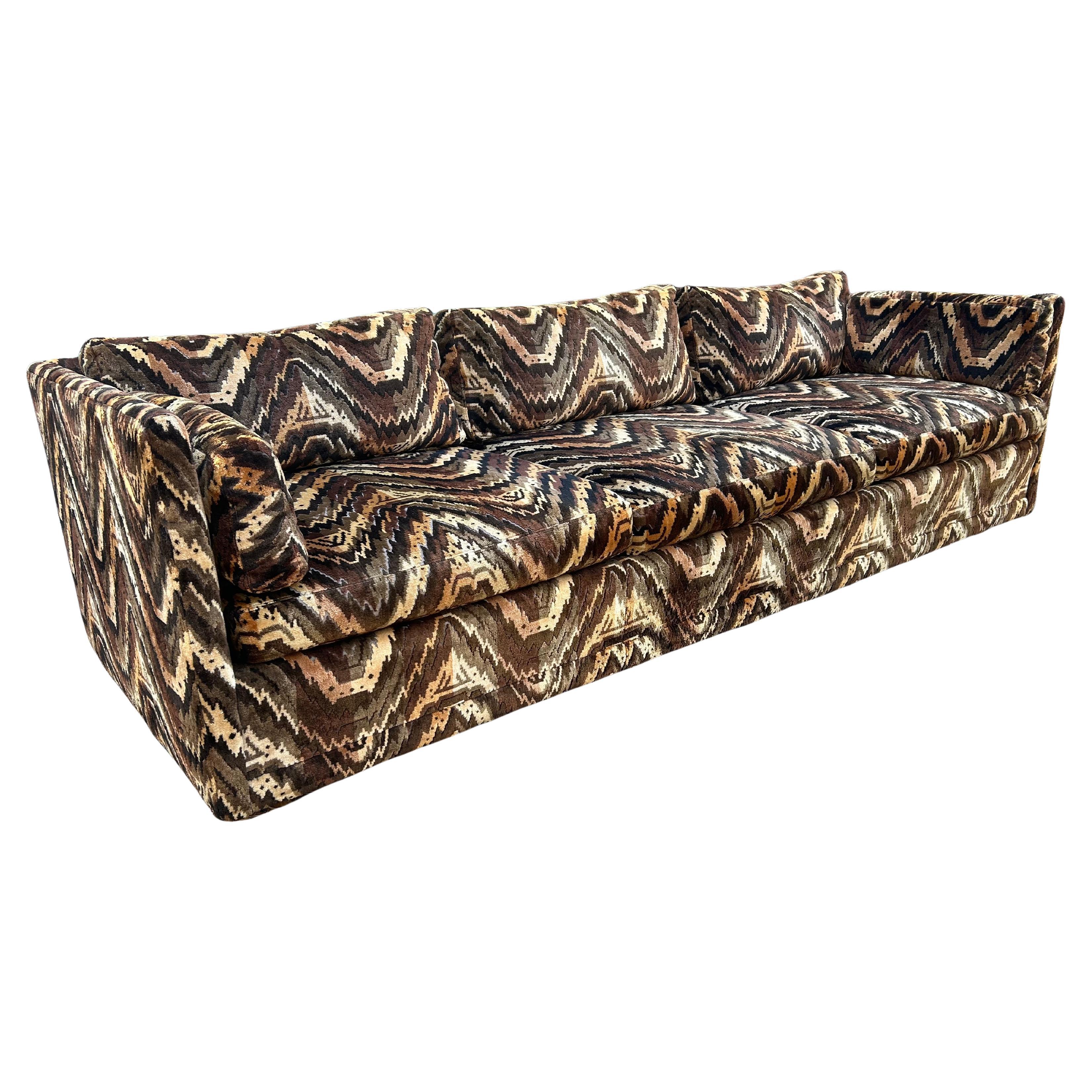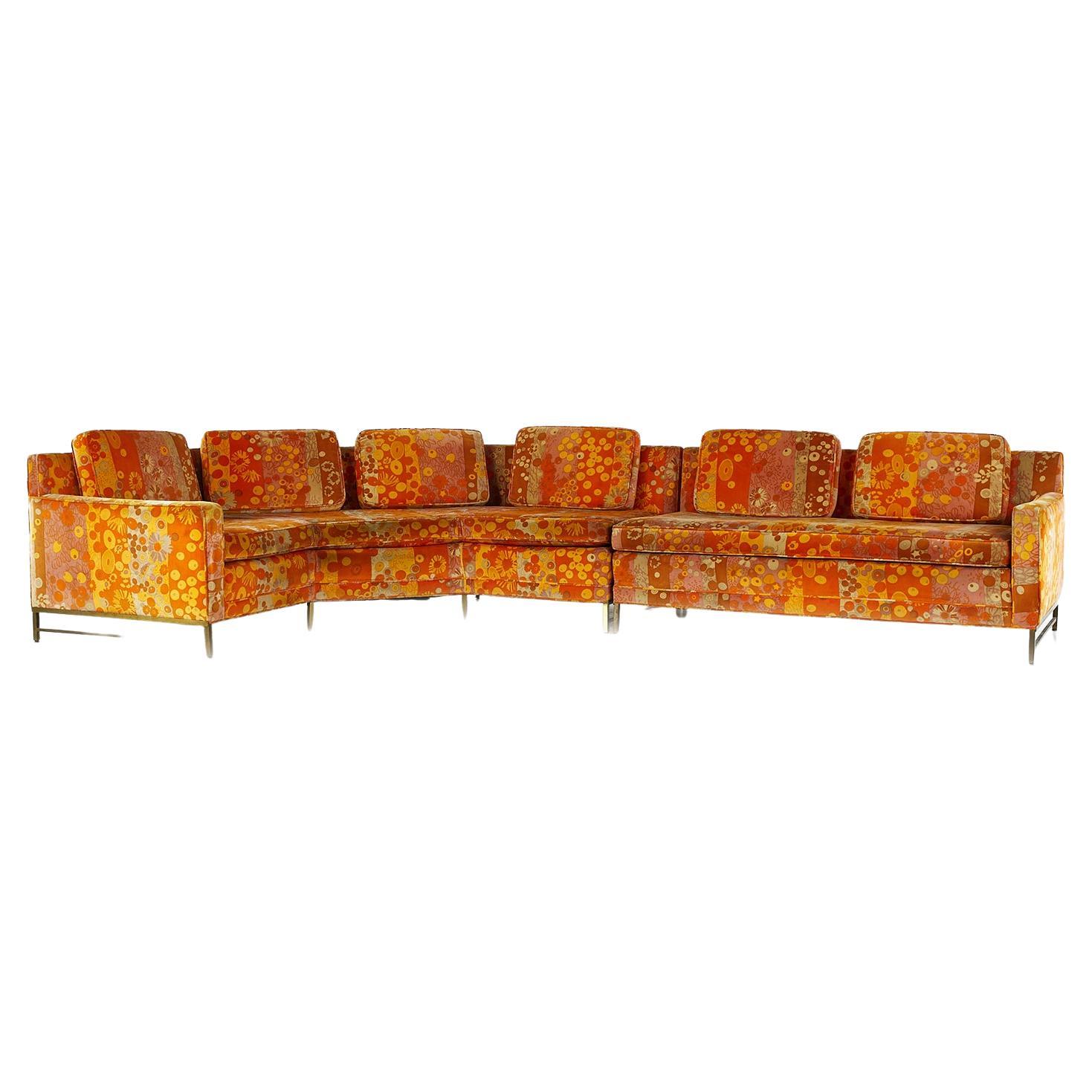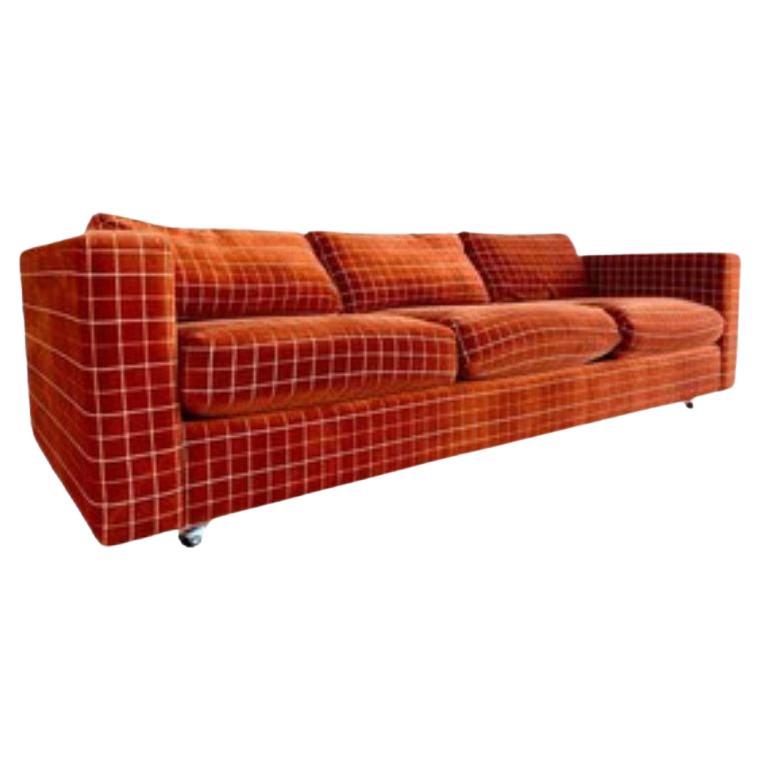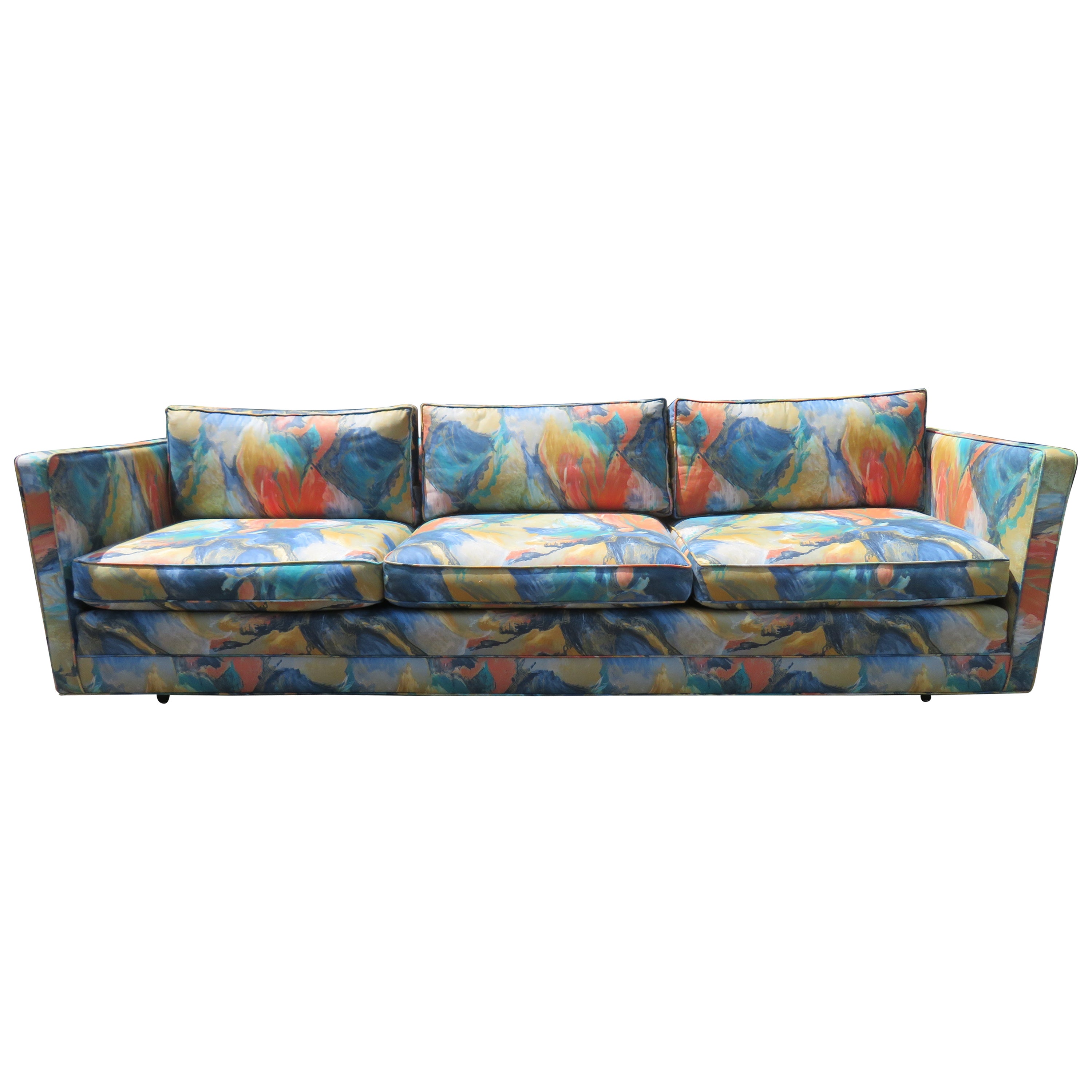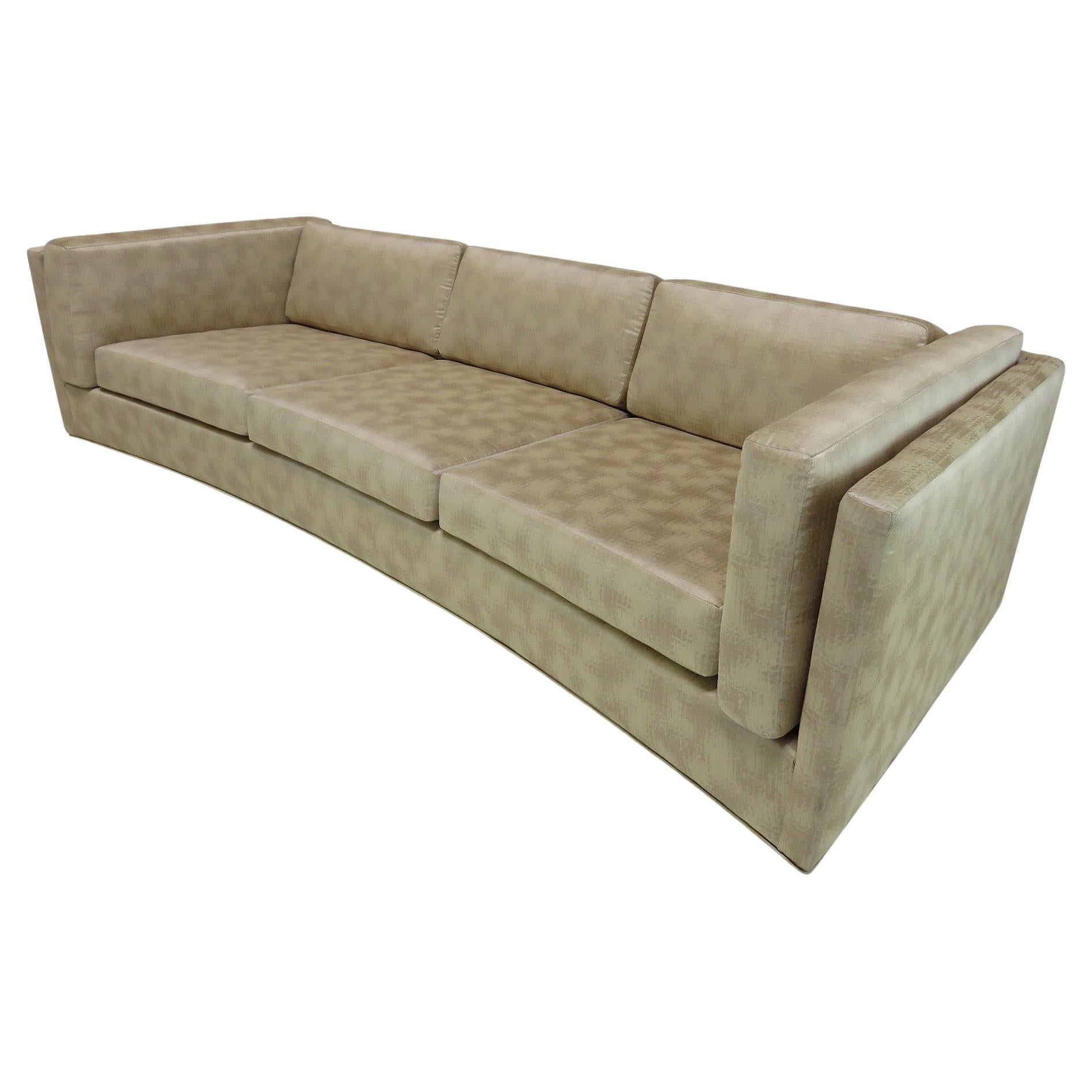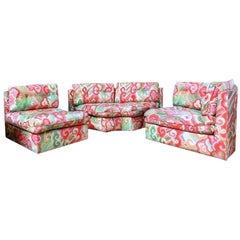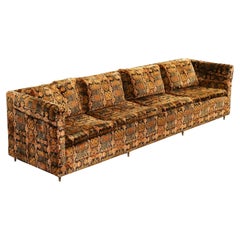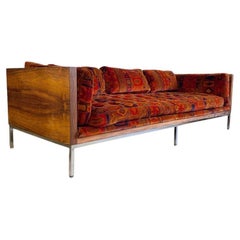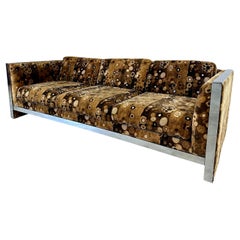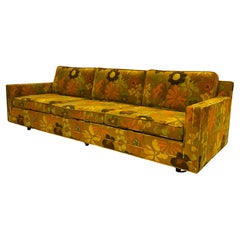
Harvey Probber Tuxedo Sofa in Jack Lenor Larsen Velvet
View Similar Items
Harvey Probber Tuxedo Sofa in Jack Lenor Larsen Velvet
About the Item
- Creator:Jack Lenor Larsen (Designer),Harvey Probber (Designer)
- Dimensions:Height: 26.25 in (66.68 cm)Width: 90.5 in (229.87 cm)Depth: 32.5 in (82.55 cm)Seat Height: 16 in (40.64 cm)
- Style:Mid-Century Modern (Of the Period)
- Materials and Techniques:
- Place of Origin:
- Period:
- Date of Manufacture:1960s
- Condition:Minor fading. Very good condition showing minimal wear.
- Seller Location:Chicago, IL
- Reference Number:1stDibs: LU923338274592
Jack Lenor Larsen
Jack Lenor Larsen was a celebrated American mid-century modern textile designer born in Seattle. He fostered connections throughout the design and architecture industries beginning in 1950, and today, his influential eponymous design company is widely recognized for its muted hand-spun textured textiles. Larsen manufactured fabrics all over the world for more than six decades, using both traditional and modern weaving techniques.
Larsen initially studied in the architecture program at the University of Washington before he quickly realized he was instead interested in furniture design and interiors. He earned his MFA in 1949 from the Cranbrook Academy of Art — the go-to art school for design stars of the mid-20th century. The following year he moved and opened a studio in New York City where he launched his career.
For one of his first commissions, which was to design curtains for the Lever House — a New York City icon designed by Gordon Bunshaft and Natalie de Blois — Larsen created a linen and gold metal-themed weave to complement the building’s famed glass walls. He designed similarly magnificent textiles for the Phoenix Opera House, the Wolf Trap Theater and more.
Nowhere is Larsen’s profound impact on textile design more evident than at LongHouse Reserve, his house in East Hampton, New York. Modeled after a seventh-century Shinto Shrine, the home and its surrounding sculpture gardens opened to the public in 1992.
Larsen built LongHouse Reserve in collaboration with Charles Forberg. The property features sliding panels that showcase the revered artisan’s fabrics as well as works by Lucie Rie, Wharton Esherick, and Edward Wormley. The gardens feature sculptures by Willem de Kooning, Sol LeWitt and Yoko Ono.
Larsen had a solo exhibit at the Louvre in 1981. His work is held in the permanent collections of the Museum of Modern Art in New York, the Art Institute of Chicago and the Victoria and Albert Museum in London.
Find vintage Jack Lenor Larsen lounge chairs, sofas, and dining room chairs on 1stDibs.
Harvey Probber
A popular designer who had his heyday from the late 1940s into the 1970s, Harvey Probber is one of the post-war American creative spirits whose work has been recently rediscovered by collectors. His designs are by-and-large simple and elegant, but his signal achievement was to pioneer one of the key innovations of mid-20th century furniture: sectional, or modular, seating.
Even as a teenager, the Brooklyn-born Probber was making sketches of furniture designs — and selling them to Manhattan furniture companies. He began working as a designer for an upholsterer once he finished high school and, apart from a few evening classes he took as an adult at Pratt Institute, he was self-taught about design and furniture making.
After wartime service — and a stint as a lounge singer — Probber founded his own company in the late 1940s. A lifelong familiarity with the needs of New York–apartment dwellers doubtless sparked his most noteworthy creation: a line of seating pieces in basic geometric shapes — wedges, squares, half-circles — that could be arranged and combined as needed. Modular furniture remained the core idea of Probber’s business throughout his career.
As a self-trained designer, Probber was never wed to any particular aesthetic. He preferred the simple lines now associated with mid-century modernism for their inherent practicality, but often used hardware to enliven the look of his pieces, or added elements — such as a ceramic insert in the center of a round dining table — that was visually interesting and could serve as a trivet. He gravitated toward bright fabrics with attractive, touchable textures that might be satin-like or nubbly. Above all, Probber insisted that the sofas, case goods and other products that came out of his Fall River, Massachusetts, factory be built to last.
“The quality of aging gracefully,” Probber once told an interviewer, is “design's fourth dimension.” This quality he realized: Probber furniture is just as useful and alluring now as it was when made — and maybe even more stylish.
Find a collection of vintage Harvey Probber side tables, sectional sofas, chairs and other furniture on 1stDibs.
You May Also Like
Mid-20th Century American Mid-Century Modern Sectional Sofas
Textile, Wool, Mohair
Mid-20th Century Unknown Mid-Century Modern Sofas
Upholstery
Mid-20th Century Mid-Century Modern Sofas
Velvet, Rosewood
Mid-20th Century American Mid-Century Modern Sofas
Chrome
Vintage 1960s American Mid-Century Modern Sofas
Upholstery
Vintage 1970s American Mid-Century Modern Loveseats
Upholstery, Wood
